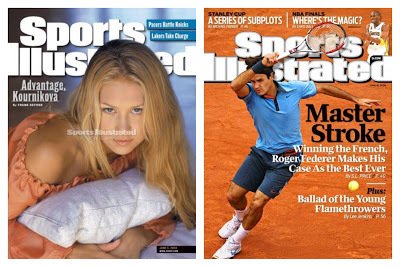Sociology of sports, also referred as sports sociology, is the study of the relationship between sports and society. This branch in Sociology examines how culture, values and human interaction influence sports and vice versa. It also goes into the relationship between sports and media, politics, economics, religion, social inequality and social mobility.
The first thing that sociologists tried to answer is why is sports important to society. Sports is deeply embedded in culture and institutions. Educational institutions and sports are intertwined. Achievements in sports disciplines are considered to be as very important and gain a lot of recognition. Sports programs are given a lot of importance by people in governmental institutions. Media too spends a lot of resources on sports. A lot of newspapers dedicate a number of pages to sport and a lot of television programs are dedicated to sports. Business spends a great deal of money of sports including financial contributions, advertising associations as well as ownership of some professional teams. A lot of companies sponsor local professional and college team sports. Cities spend a lot of money to build sports stadiums with top-notch facilities and latest technology.
Sports is valued by many lay people as well as professionals as a way of building a stronger character, developing minds and bodies, teaching people how to work better in teams and being self -disciplined. These are considered as very important values by the majority of societies and are strongly encouraged.
While functionalist theorist stress about the functions of sports in society the social conflict view sees sport as a reflection of the inequalities that exist in the wider society. They believe that sports is a social institution where the powerful oppress, manipulate, coerce and exploit the less powerful.
A lot of research within the sociology of sports is gender, including gender inequality and the role that gender has played in sports throughout the years. Just to give an example in the 1800’s participation of women in sports was strongly discouraged and it was not until the 1850’s that physical education classes for women were introduced. The inequalities still exist today.
Experts in the topic identified several themes in the media presentation of female athletes. The images of women that we see on the media tend to shift the focus from their athleticism by portraying them in street clothes or in any other every day activity. On the other hand male athletes are more often portrayed in sportswear and performing their sports. The representations also emphasize women’s sexuality more than men’s so the images as well as descriptions tend to focus on their sexual features. They emphasize on women’s heterosexuality to try and reduce the stereotypes of female athletes as lesbians. If you look at the images closely you will immediately realise that the pictures very often include a partner or children. Women who engage in and openly enjoy sports have been viewed with suspicion or concern. Female athletes and women’s sports teams often feel pressured to prove their heterosexuality for fear of being labeled lesbians.
Another aspect that has been recently examined is that female athletes receive far less media coverage then male counterparts. More women are watching the women’s FIFA World Cup on television than ever before. Over one billion viewers are expected to follow this event which are record figures. These figures suggest that a new level of parity with men has been achieved when it comes to women in sports- not just in terms of participation in competitive sports but also the ability to watch female athletes compete on television. However, new studies by researchers suggest that the opposite is true. They show how female athletes are covered less in media than they were in 1989. The study reports that the decline in coverage is insulting and humoursly sexualized stories about women athletes is both a byproduct of the decrease in coverage but is also caused by the decrease in coverage.
The everyday exclusion of women’s sports is perhaps more evident during major international sporting event like FIFA Women’s World Cup. Aside from tennis, women’s athletics is widely viewed as an inferior product among the country’s main sports and very often is disregarded.

